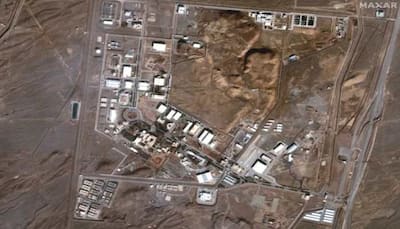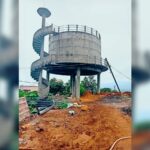Vienna/Tehran/New Delhi: A recent Israeli airstrike on Iran’s Natanz nuclear facility has reportedly caused extensive damage, with nearly 15,000 centrifuges crippled, according to Rafael Grossi, head of the International Atomic Energy Agency (IAEA). The attack, which took place early on June 13, has been described as a significant setback to Iran’s uranium enrichment programme.
One of Iran’s largest and most critical nuclear plants, the Natanz site came under heavy bombardment from Israeli forces as part of a wider military operation targeting Iranian nuclear and military infrastructure.
Grossi told the BBC that the attack destroyed the upper level of the Pilot Fuel Enrichment Plant (PFEP), which was producing uranium enriched up to 60% purity, a level approaching the 90% required for weapons-grade material.
He said the damage likely occurred after a sudden loss of external power supply to the underground sections of the facility. Although the main cascade hall housing thousands of centrifuges did not suffer a direct hit, the power disruption may have caused serious internal mechanical failures.
Centrifuge machines are extremely sensitive and operate at high speeds to separate uranium isotopes. A loss of power can destabilise their rotation, leading to internal collisions and significant structural damage.
Centrifuges are machines that spin uranium hexafluoride gas at high speeds to separate Uranium-235 from Uranium-238. The lighter U-235 isotope is used in both nuclear reactors and, when highly enriched, in nuclear weapons. In their natural state, uranium deposits contain only 0.7% U-235.
Enrichment is the process that increases this concentration. More powerful centrifuge models, such as Iran’s IR-2m and IR-6, allow this process to occur faster and more efficiently.
The enrichment process is repeated multiple times to achieve the desired purity. The purity must reach 90% for weaponisation. Prior to the attack, Iran was producing uranium at 60% purity – a level already raising international concern.
Despite the scale of the damage, Grossi confirmed there has been no external radiation detected. “Our assessment indicates no change in radiation levels outside the facility. This suggests no immediate radiological threat to the environment or surrounding population,” he said.
However, he warned of possible chemical and radiological contamination inside the plant due to structural impacts.
He also reported that four buildings at another major nuclear site in Isfahan were damaged. However, the Fordow enrichment facility, also underground, appears to have been spared.
Experts say that even short interruptions in electricity supply can destabilise centrifuge systems. In complex cascade arrangements, a minor malfunction in one unit can cause a chain reaction, damaging others.
The IAEA has not yet conducted a physical verification on-site but is closely analysing high-resolution satellite images.
Earlier this week, Grossi informed the IAEA board that there may be chemical and radiological contamination within the Natanz facility, though this remains unconfirmed without a detailed inspection.
Friday’s strike marks Israel’s first major move in its recent campaign against Iranian military and nuclear targets. According to Israeli officials, the goal was to “neutralise an imminent nuclear threat”. They claimed that underground centrifuge halls were affected, although no public evidence has been provided so far.
The Israeli military also stated that the strike on Isfahan damaged infrastructure used to produce metallic uranium and facilities involved in reconverting enriched uranium.
However, Grossi confirmed that underground sections at Isfahan remain intact, and if Fordow suffered any damage, it appears to be minimal.
The incident has raised new concerns about the trajectory of Iran’s nuclear programme and the risk of a wider regional conflict. The IAEA continues to monitor developments closely.
Stay informed on all the , real-time updates, and follow all the important headlines in and on Zee News.








